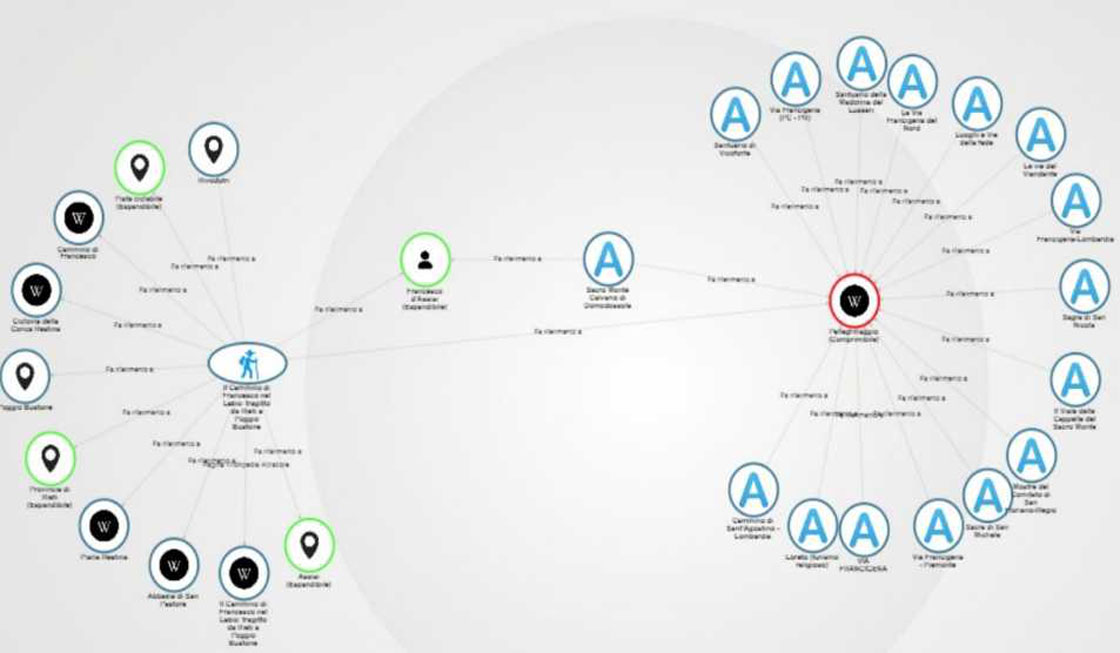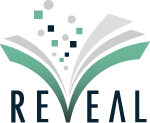Map of Opportunities
BIG DAT · TOURISM
The “Data intelligence” platform of the Chambers of Commerce in Italy, Big Data Tourism, is a municipal-level data system extended to the entire Italian territory, which offers a governance tool of the tourism districts by integrating information from multiple institutional and open sources.
Technological Objective: Design, Data Gathering and Analytics in open sources for the support to data-driven policies in the governance of italian tourism industry
Reference User: ISNART – UnionCamere
Project timeline: June 2018 – October 2019, February 2020 – now
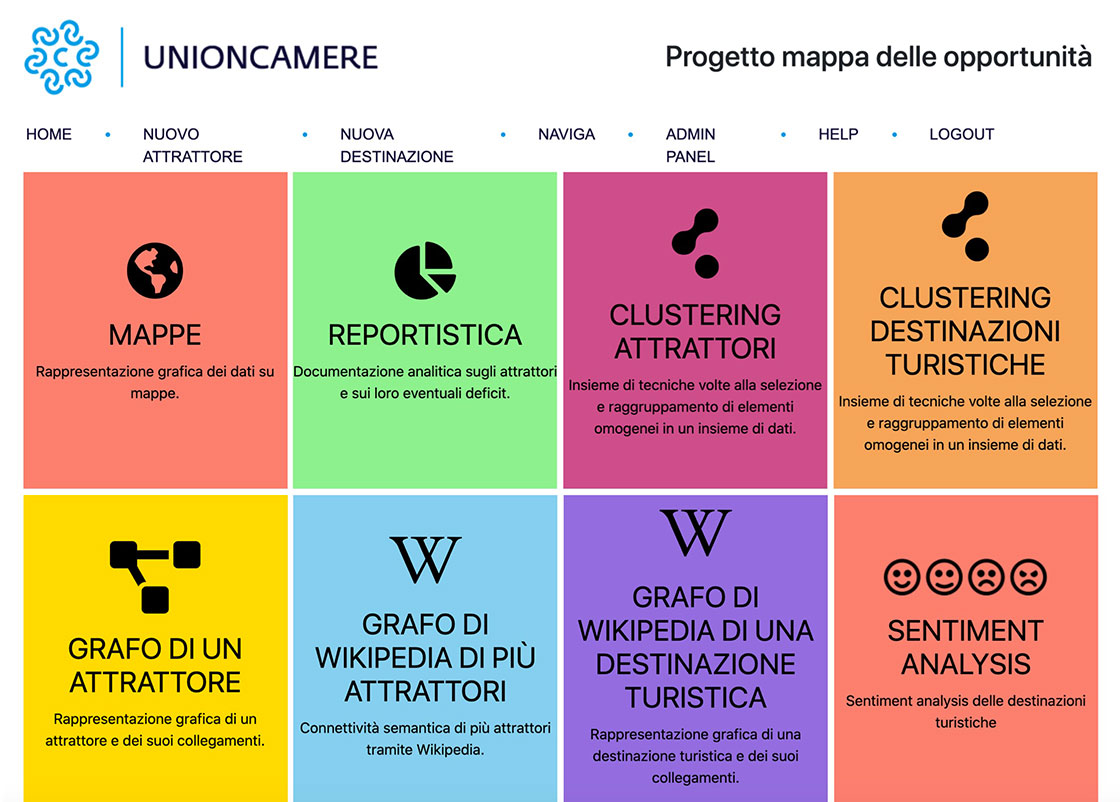
A Large-scale Ontological Model
SiMoO makes operational a large-scale ontological model, called Map of Opportunities (MoO), and its main application, i.e. a distributed decision support system for local government authorities.
MoO is an ontological resource, currently including more than 500 potential touristic attractors across Italy. Moreover, it is the basis of a large-scale Service Oriented Architectures (called SiMoO), offering intelligent functionalities, such as entity-linking, cluster analysis and automatic alerting.
Public analysts and local governments will be supported in the recognition of lacks in the current touristic offers of their territories.
The Map of Opportunities (MoO), aiming to capitalize on the relationships between the cultural, identity and economic dimensions: it is the core semantic model to trigger the design and governance of tourism processes and potential innovation opportunities. Its main application is to support and enable local government authorities in detecting and designing touristic business activities. In other words, public analysts and local governments will be supported in the recognition of lacks and, correspondingly, opportunities in the current touristic offers of their territories.
The construction of the MoO model of the local attractor system, on which the overall SiMoO system is based, involves the integration of different aspects:
- The relationships established between an attractor and its territory (e.g., cultural goods, productive excellence or typical handicrafts) that constitute the aggregation factor of one or more analogous or similar territorial realities.
- The enterprises of the supply chains connected to the attractor (ex. Tourism + cultural + enogastronomic + handicraft + sports etc.), that contribute to the different phases of creation, implementation, management, marketing and communication of the touristic system and its attractors.
- The already existing visitation routes (itineraries, districts, etc.), that support the visit of attractors within one territory.
- The animation initiatives of the territory (such as special events, anniversaries, etc.) through which the integration is empowered and the attractors, as well as the enterprises and the territorial system are conveyed.
- The network for the marketing of the Local Attractors System, composed of the private subjects of the traditional and online touristic and commercial brokerage system.
- A service of constant monitoring of the visibility and usability of the system (schedules, info, signage, reachability, etc.), that is crucial for the attractor brand positioning on the consumer markets.
The Cluster analysis of the attractors allows to group together touristic attractors sharing complex touristic properties, and thus expressing some strengths or lacks in terms of the touristic offering. The a posteriori emergence of properties specific to the different clusters (e.g. lacks of expected service features) allows the analyst to discover regularities, thus identifying unsatisfied needs and promoting new opportunities.
The system of local attractors involves the entire direct and indirect business and economic chain, thanks to an integrated fruition mechanism. The technological capability of analyzing, documenting as well as detecting Local Attractors and of managing their integrated network through searching, browsing and reporting functionalities is crucial. The resulting information ecosystem is the asset that allows local and national stakeholders to orient, define and monitor all the business activities within the local economic development and its industry networks.
The Attractor becomes thus the glue that enables and strongly emphasizes the cultural and business relationships, that make economic growth possible.
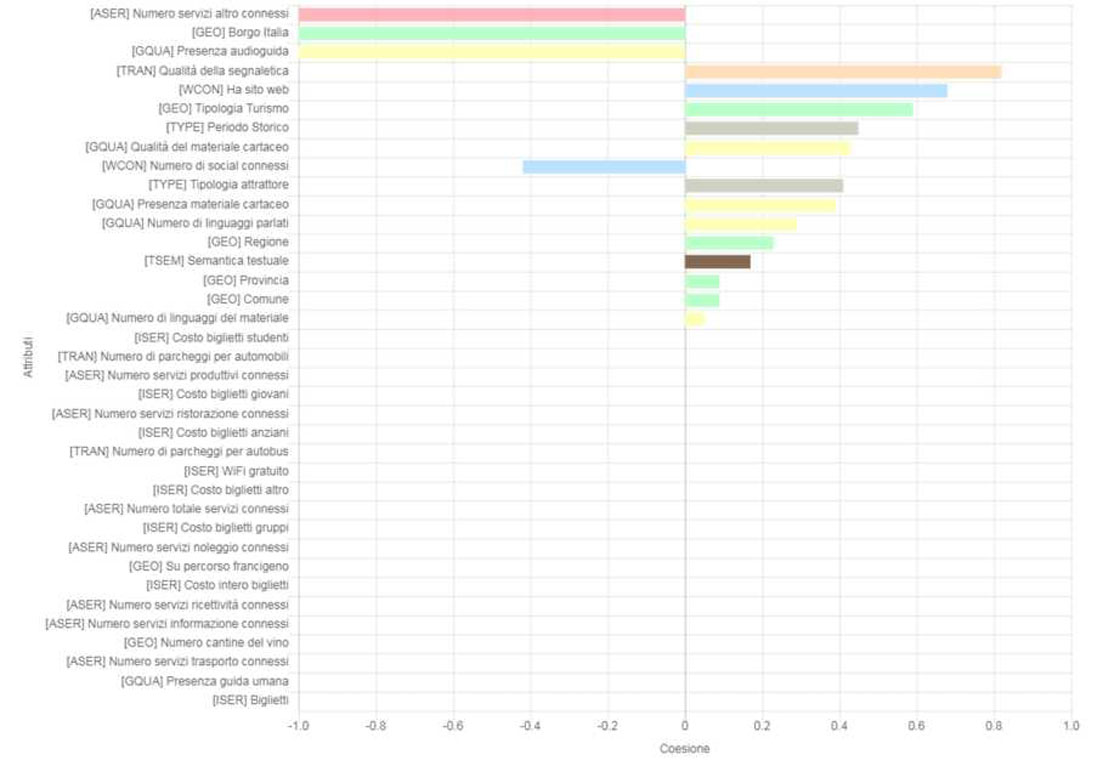
Each group expresses a set of features (categorical or numerical) as detailed hereafter:
- Attractor connected services that identify the availability of services that support an attractor in terms of the number of Accommodation, Restaurant, Production, Rental, Information or Public Transport Services, ecc.
- The geographical dimension of the attractor, such as location (latitude and longitude), location within protected areas, presence of certifications.
- Quantity and quality of guides and information materials available inside the attractor to facilitate their use.
- Internal services that are used to describe services related to the attractor in both quantitative and qualitative terms, ranging from the cost and availability of tickets to the presence of some services, such as WiFi connections, or expressing some sort of Usability issue.
- Private transport (transport infrastructure, bus parking, car parking or road signals surrounding an attractor).
- Web connections are used to describe the connectivity of an attractor with respect to social networks and the Web in general
- Type or categorization of each attractor, in terms of the historical period and attractor type.
- Textual semantics, expressed in a machine-readable representation of the textual description of the attractor to compare descriptive elements of the different attractors. In this work, each description is encoded.
It is possible to view the relationship between a service and the other services in the area and the attractors, summarize the services of a territory, view statistics of the services by type and quality of the service.
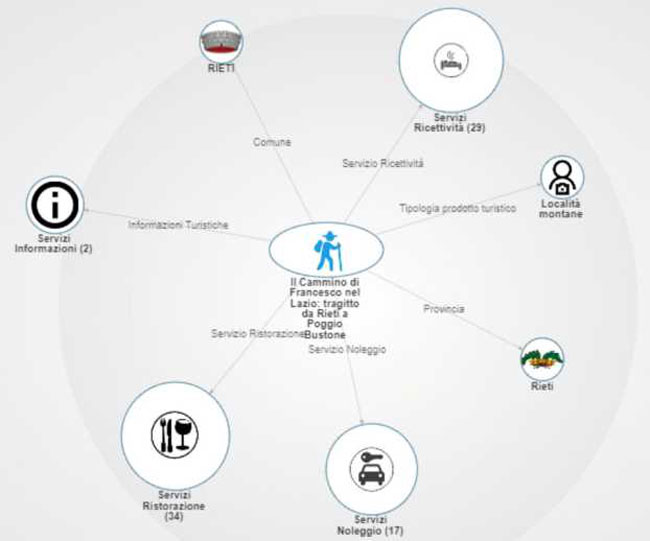
The attractors present on the platform also contain information that allows a further connection to the web: the description, an open text in natural language and the link to the respective Wikipedia page. This allows discovering, for example, an additional connection between attractors and artistic works presents on Wikipedia (like books, films, songs).
Also in this case some of the elements of the graph can be further exploded and investigated in order to identify the specific characteristics and the aspects of the connection between the current attractor with another attractor or with systems of information that allows further connections with the original attractor.
